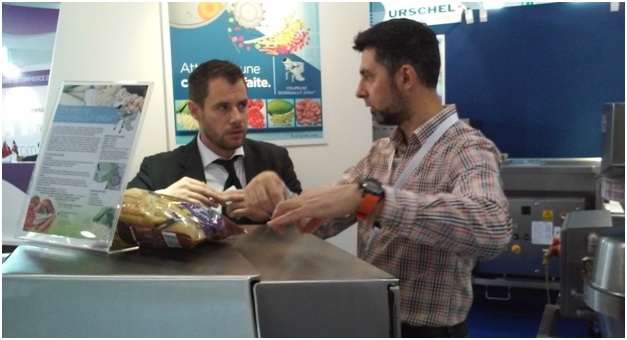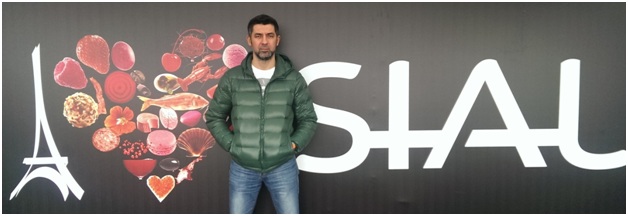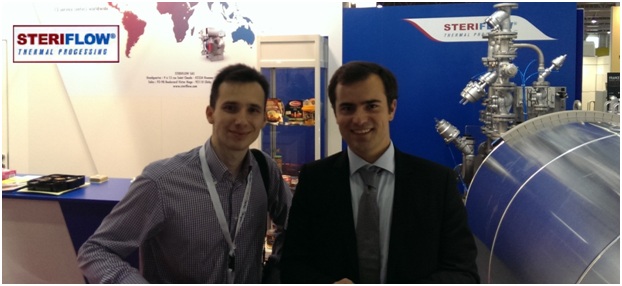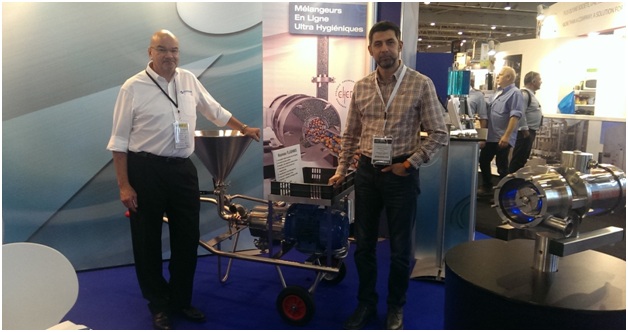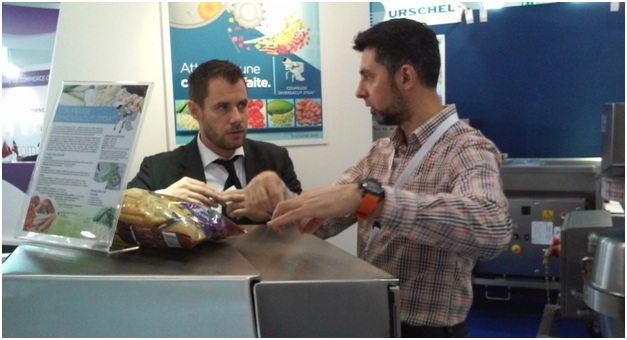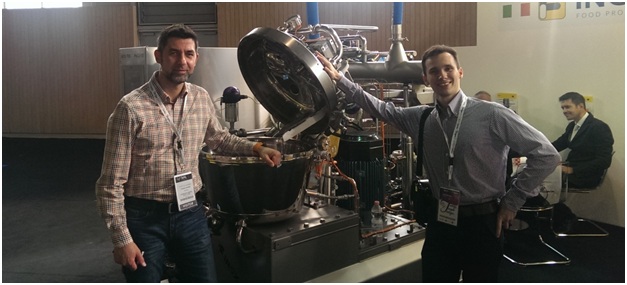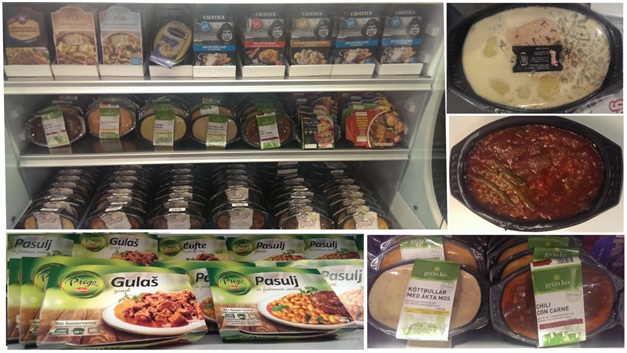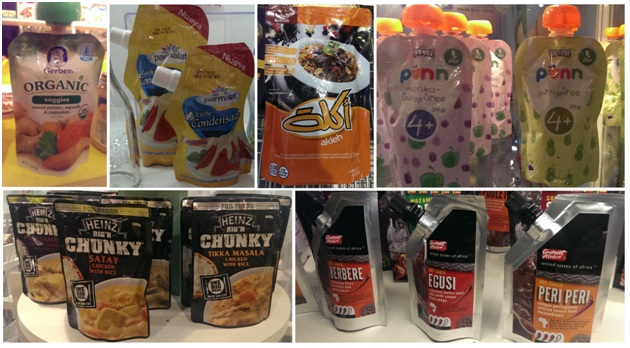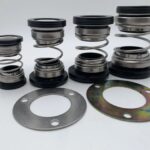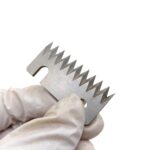International food exhibition SIAL 2014
This year, the Steiner-Ukraine delegation visited the international exhibition SIAL 2014, which celebrated its 50th anniversary and took place in Paris from 19 to 23 October 2014. It should be noted that our company is always aware of the latest trends in the global food industry, so we could not ignore the world's largest exhibition of food, beverages and equipment. This year, SIAL 2014 was on an unprecedented scale. According to Oleksiy Kolodchenko, CEO of Steiner-Ukraine, SIAL 2014 exceeded all, even the wildest expectations of exhibitors and visitors. An unprecedented variety of food, beverages, food processing equipment and bold business ideas were presented at the exhibition.
It is important to note that the audience of SIAL brings together a wide variety of market participants: retailers, restaurants and catering establishments, importers, exporters and manufacturers. SIAL is the largest platform for meeting key food suppliers and traders in Europe. It can also be seen as a unique tool for finding international suppliers and partners.
Our company visited many stands, including existing partners, as well as new equipment suppliers and food manufacturers. We would like to express our gratitude to our partners from STERIFLOW, which produces horizontal autoclaves with water cascade technology. At their stand, in addition to autoclaves, they presented samples of ready-made first and second courses that require temperature treatment after the packaging operation. Looking at the latest market trends, we can conclude that European consumers increasingly prefer products from the readymeals segment. The price of such products on the shelves of European supermarkets ranges from 4 to 8 euros per serving. The cost of a product is usually influenced by several factors: the manufacturer, the quality of the raw materials used to prepare the finished dish, and the cooking method.
While the first two factors are fairly self-explanatory, the last one requires a little explanation. Today, there are two ways to cook a product after packaging: pasteurising the product in an autoclave, which means heating it and treating it with a hot shower at 90°C. The second method is to process the product using a microwave tunnel, where cooking takes place under the influence of microwaves. In the latter case, the investment in equipment is more significant, in particular, the cost of the tunnel itself differs from the autoclave by a factor of 10, which, of course, affects the final cost of the product. Each of these methods has its own specifics, advantages and disadvantages, but this is a completely different story.
We should also mention our partners from Foggy Albion, representatives of Silverson, a company that produces high shear mixers. The meeting was very productive and the reception was warm. The stand had a large number of mixers of various types. Both traditional time-tested units and new products were presented. Among the latest machines, we can note an inline dry yeast dosing and feeding machine. The machine is based on the LS450 flow mixer, which is mounted on a mobile trolley, which ensures the mobility of the plant. The machine is also equipped with a loading mouth and a paddle valve for in-line feeding of dry components. The idea of using such a machine is not new, but the manufacturer has only now dared to implement such a layout machine.
The meeting with Urshell representatives was extremely productive. The stand presented machines for grinding and slicing various components in the food industry. We discussed the specific application of a 2-tonne machine for a meat slicing line. It is clear that the understanding of the technological process of a European manufacturer is fundamentally different from the understanding of processes at the enterprises of a Ukrainian manufacturer, so there is a certain misunderstanding in some points.
Steiner-Ukraine presented its products at the booth of an Italian company that produces technological equipment for the preparation of ready-made first and second courses. During the discussion, we revealed the secrets of the technological scheme of this plant. Italians are very reluctant to share their technology, sometimes overemphasising the mystery of their methods.
The exhibition highlighted the European trend for the Ready-to-Eat segment. In practice, products in the Ready-to-eat segment are actively gaining market share among European consumers. The concept of such a product is really convenient and has numerous advantages. Just imagine that you are buying a ready-made product that does not require time and labour to prepare. You just need to heat the packaged product and the meal is ready. Manufacturers offer a wide range of recipes, including European, Oriental, American and Asian cuisine. The shelf life of the product is also an advantage, usually 30-40 days, but in some cases it can reach 60 days. However, the price is a disadvantage, as it varies considerably depending on the region of the EU, but generally ranges from €4 to €8 per pack. Some products also lose vitamins after cooking.
In the near future, ready-to-eat meals will reach Ukrainian consumers to the extent that they are available to European consumers.
It is also worth noting the significant interest of the European market in doy-pack packaging. A variety of products have found doy-pack packaging to be one of the most rational solutions. The concept of packaging products such as yoghurts, fruit purees, sauces with slices, dressings, mousses, ready meals (rice with gravy, curried chicken in sauce), etc. in doy-pack was a novelty for Ukrainian consumers.
The main areas of the exhibition were: beverages, dairy products, fresh frozen food and ice cream, seafood, delicatessen, canned food, grocery, confectionery, dried and smoked products, fruits, vegetables, dried fruits, organic products, healthy food and supplements, food and supplements.
The leading trend in the European grocery market, surprisingly, has been towards eco-friendly products, as well as products with a minimum of preservatives, colourants and other non-natural ingredients. It is worth noting that this year, China was one of the factors that influenced the European food market. Representatives of China presented a wide range of products, from cereals to premium segment products.
This year, SIAL Paris brought together some 5,500 companies from over 100 countries on its 215,000 sqm exhibition space, providing exclusive access to wholesalers and allowing more than 150,000 visitors to participate in conferences, roundtables and find new business ideas.
